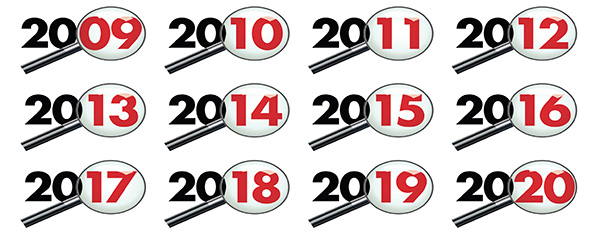Before we speed into 2020, let’s take a moment to look back on the last decade in the world of workplace investigations. The context in which investigations occur and the profession have evolved over the past ten years.
On January 1, 2010, the country ws still feeling the immediate impacts of the Great Recession. The Dow Jones Industrial Average closed at 10,428.05 on December 31, 2009. As the decade came to a close last month, the Dow was at 28,462.14. The unemployment rate in December 2009 was 9.9%; in November 2019, it was 3.5%. While these overall economic indicators have strengthened in the last ten years, the conditions that lead to discord, discrimination, and retaliation in the workplace largely remain and the awareness of their potential impacts has expanded.
In 2010, employer’s use of outside investigators to look into employee complaints and misconduct was limited. As a matter of fact, the professional association for workplace investigators, the Association of Workplace Investigators (AWI), was founded in 2009, with a majority of membership in California at that time. Over the past decade, it has become more common, and a best practice, to rely on an independent third party to investigate serious allegations of employee misconduct. This increase has resulted in more professionals who are experienced and skilled in this work across the globe. Today, AWI has over 1,000 members in the United States, Canada, Australia, Europe and beyond.
Trends in EEOC claims over the decade illustrate an interesting trend. Actual charges decreased over the decade with 99,922 in 2010 to 76,418 in 2018. These numbers reflect what has historically been seen, i.e., that overall charges tend to decrease when the economy is in overall better shape. These numbers, however, still reflect tens of thousands of complaints filed in an employment context where we know the overwhelming majority of those who believe they’ve experienced discrimination in the workplace do not file complaints. They also do not include all filings with state agencies, some of which have seen increases in this same time period. In short, these traditional measures demonstrate the ongoing need for investigation of traditional complaints. And, when the numbers are unpacked, they reveal that, despite overall stronger economic numbers and decreases in certain charges, sexual harassment and related retaliation charges have increased in recent years.
Increases in those categories shouldn’t be surprising in light of the public awareness and discussion of sexual harassment in recent years in the wake of #MeToo. That awareness extends beyond conduct clearly constituting illegal behavior, with employers recognizing the need to investigate complaints that may not lead to legal exposure. Indeed, a new trend we see is that companies have come to realize issues may require investigation even in the absence of a traditional “complaint.” Increased research, discussion, and overall awareness of the negative impacts on the bottom line of “bullying” behavior or other precursors to discrimination and harassment has influenced that realization. Many states have either passed or are considering legislation regulating “bullying” behavior in the workplace, and we expect this trend increasing over the next decade.
And more employers recognize that serious misconduct may be occurring in the absence of any formal complaints. Employers have good reason to uncover this misconduct for the safety and happiness of their employees. As the decade progressed, employers also faced increasing risk of judgments in the court of public opinion, often via viral social media campaigns, that have the potential to be far more damaging than any legal settlement or judgment. There have been numerous examples of share prices dropping precipitously in the wake of public comments about misconduct by company leadership. Boycotts of products and services have severely impacted company revenue and brand value. As Rosemary Lally and Brandon Whitehill reflected in a March 2018 Council of Institutional Investors publication, “[p]reviously viewed by many as unavoidable litigation risks, boards of directors have begun to appreciate these problems as potentially seismic events, understanding that they are not limited by time and pose a host of fundamental risks, including risks to the company’s brand and market reputation, its operations, and its shareholder value.” (emphasis added).
Upon reflecting on the last decade, we could recount specific employment law developments touching on investigations (e.g., see our recent blog post on the NLRB’s reversal in December 2019 of its Banner Estrella decision on investigation confidentiality rules, NLRB Decision on Confidentiality, reflect more on the aftermath of #MeToo, or detail prominent cautionary tales from the news. We’ll continue to do that for you here in our newsletter, our blog, and our personal discussions. But the main takeaway from the last decade – from the increased awareness and activism around harassment – is that you can never know too much. What we’ve discussed many times in these pages remains, and is becoming more, true. Stay curious and proactive. Consider the human and business impacts well-beyond any narrow legal exposure. If you do so, the next decade will hopefully be one of successful and supported employees for you and your clients with the added benefit of keeping you out of the courtroom and the news. We’re here to help you along the way.

